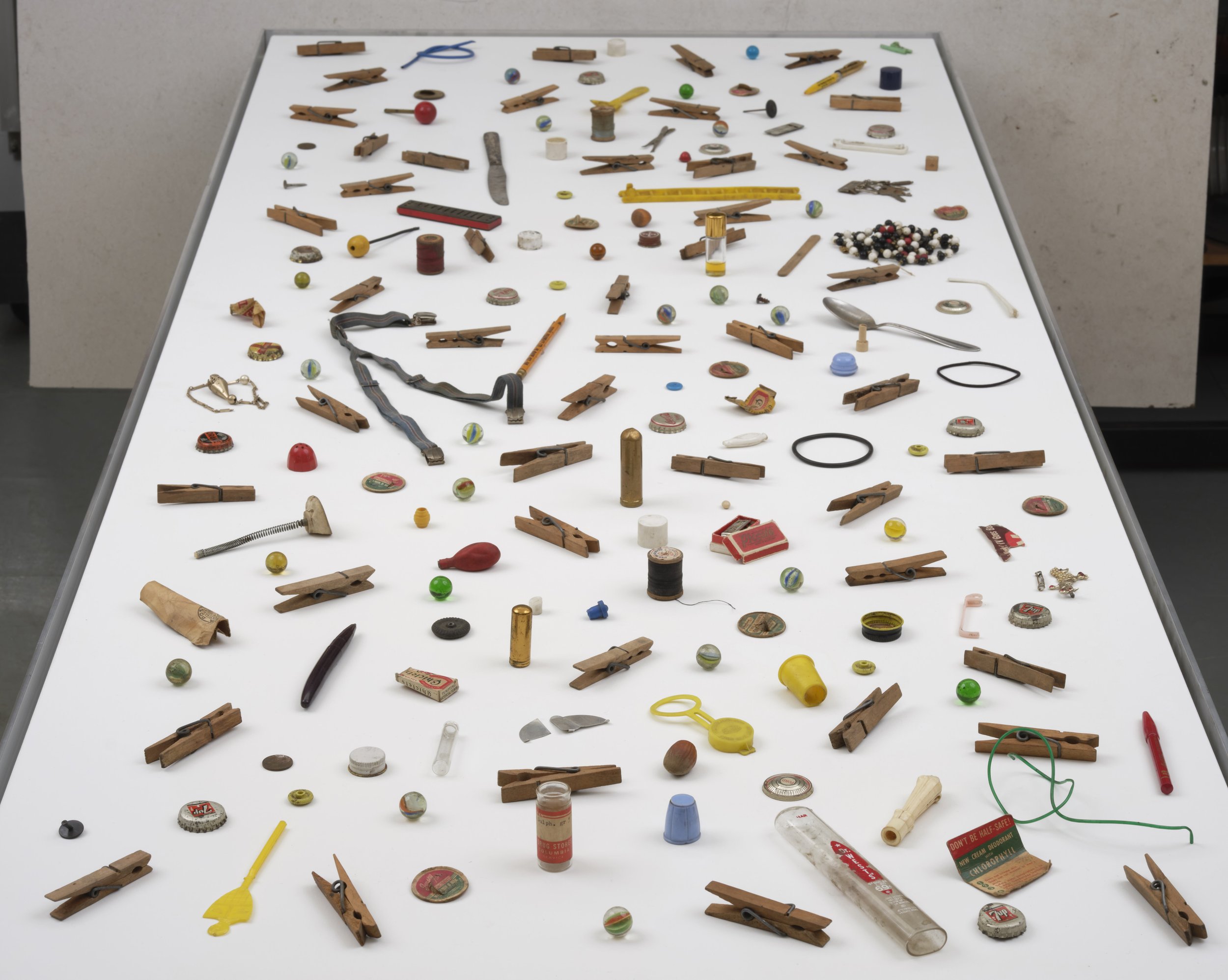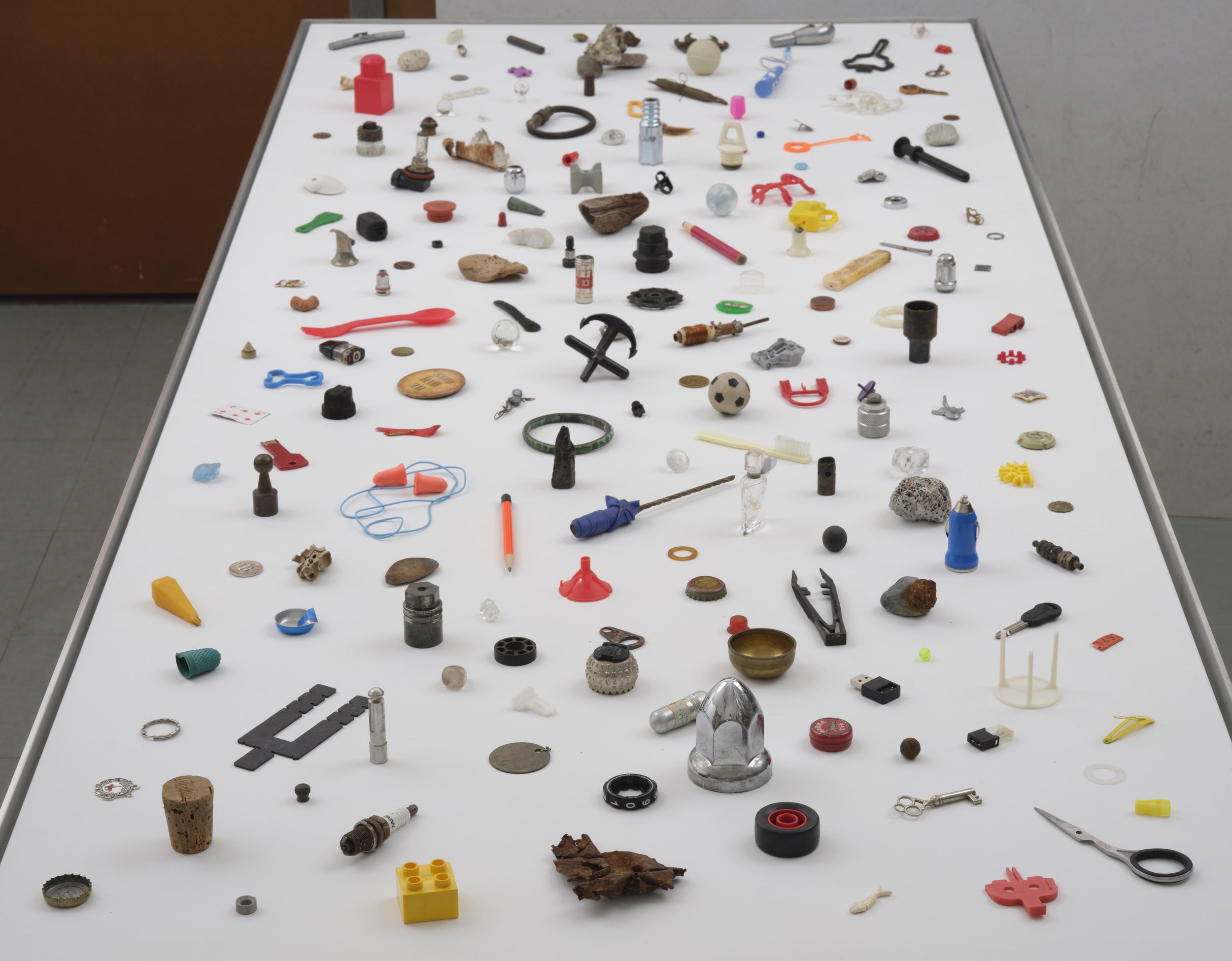Two Pack Rats
mixed media
2023
The Pack Rat
John Muir once had to wrestle a wood rat for his ice-axe, after the animal had already absconded with his barometer and spectacles...
The Interior Salish have stories of a giant wood-rat coming into villages at night with an empty sack over his shoulder.
The Bushy-tailed Wood Rat (neotoma cinerea), is the only native North American rat. Generally a forest- or desert- or cliff-dwelling vegetarian, they're not a true rat like their black (rattus rattus) or brown (rattus norvegicus) immigrant cousins. They're more closely related to hamsters or lemmings or voles. They can grow to 18" long (45 cm)–half their length is tail–and can weigh 1.5 pounds (590 g.) Their western range is from the Yukon to the Sonora Desert; in the south, they eat a diet rich in succulents with high carbonate and oxalic content, and as a result their massive debris-middens (sometimes several feet high) of sticks, twigs, leaves and grasses, built up through generations of habitation, become cemented together through the calcium carbonate and sugars deposited in their urine and feces. These stony formation can last 50,000 years. Paleobotanists and paleoecologists find these middens a rich source of preserved information, an historical trove of natural materials for analysis, indicating the region's progression of flora and fauna.
Inside these middens can be found nest cups, where pack rats raise their young. They can have up to five litters a year, each with five kits. Although they generally live in caves or forests, pack rats will not pass up a human dwelling, should they come across one. They are most famous for their random collecting of objects they've found, known to drop things they're carrying if they come across something more interesting on the way; they seem to collect things for the sake of collecting. A thing that is completely ordinary to us may be out of the ordinary to a pack rat, and the pack rat's curiosity has become for us its own curiosity.
In the mid-80s, while renovating a house on Yale Street in East Vancouver, I discovered a mixed collection of nearly 200 random household objects nestled inside some basement duct-work, an eclectic assortment of small things collected from the house and brought there, presumably, by a pack rat. Some could be dated to the mid-1950s or early 60s, (coins, pencils with 4-digit phone numbers, business names.) This meant the collection had been there for 30 or 40 years before it was found. Since pack rats do not live long, the collecting was a kind of domestic Vancouver time capsule. The contents were carefully removed and put into a plastic bag, sealed up, and set aside–it seemed an unusual enough find to preserve. Everything on this first table is that collection.


The Other Pack Rat
The concept of serendipity comes from Horace Walpole: "the faculty of making happy and unexpected discoveries by accident" (OED).
Tools and artifacts abound in the archaeological record; what things are made of, how they are made and why they were made are constant intrigues. We form special bonds with inert materials that hold special significance for us–things we associate with family, friends or places. We keep things for reasons that are sometimes obscure. Since the era of the Cabinets of Curiosities in the 17th century, holding cultural artifacts in trust for future generations are essential and necessary cultural and didactic enterprises helping to define us and our relation to others.
A person picking up junk in their neighbourhood will constantly come across objects cast off, lost, dropped, thrown down, or otherwise abandoned. Humans produce more things than they can possibly use and much of what is produced is single-use and thrown away. The amount of human trash is always greater than our ability to clean it up. Grooming a local territory by picking up garbage allows people to clearly see where they live; it's a means of taking possession, an act of shared civil responsibility.
But much of what is found can be visually interesting. Many of the things on this table came from over a decade's worth of street cleaning and scavenging. Most is made from petroleum-based plastic, now causing enormous world-wide ecological and health-related damage for humans and other species. Shredded down to micro-and nano-plastic, it affects all living things. In humans and other animals, it can disrupt brain function as well as processes of reproduction, hormonal balances and digestive health. It will have larger unknown consequences for generations.
After years of gathering things, I took a look at this strange collecting and saving of curiosities from streets and elsewhere–and realized it all looked very familiar. I went back to the plastic bag with the pack rat hoard. The two collections were laid out on tables, and the uncannily similar commonality was a sudden and delightful revelation. The pack rat and I had something in common—noticing things out of the ordinary, and setting them aside. Picking up something they come across in their travels was not unlike my seeing something on the ground and putting it in my pocket. Like souvenirs or mementos, they're things saved on the way.
